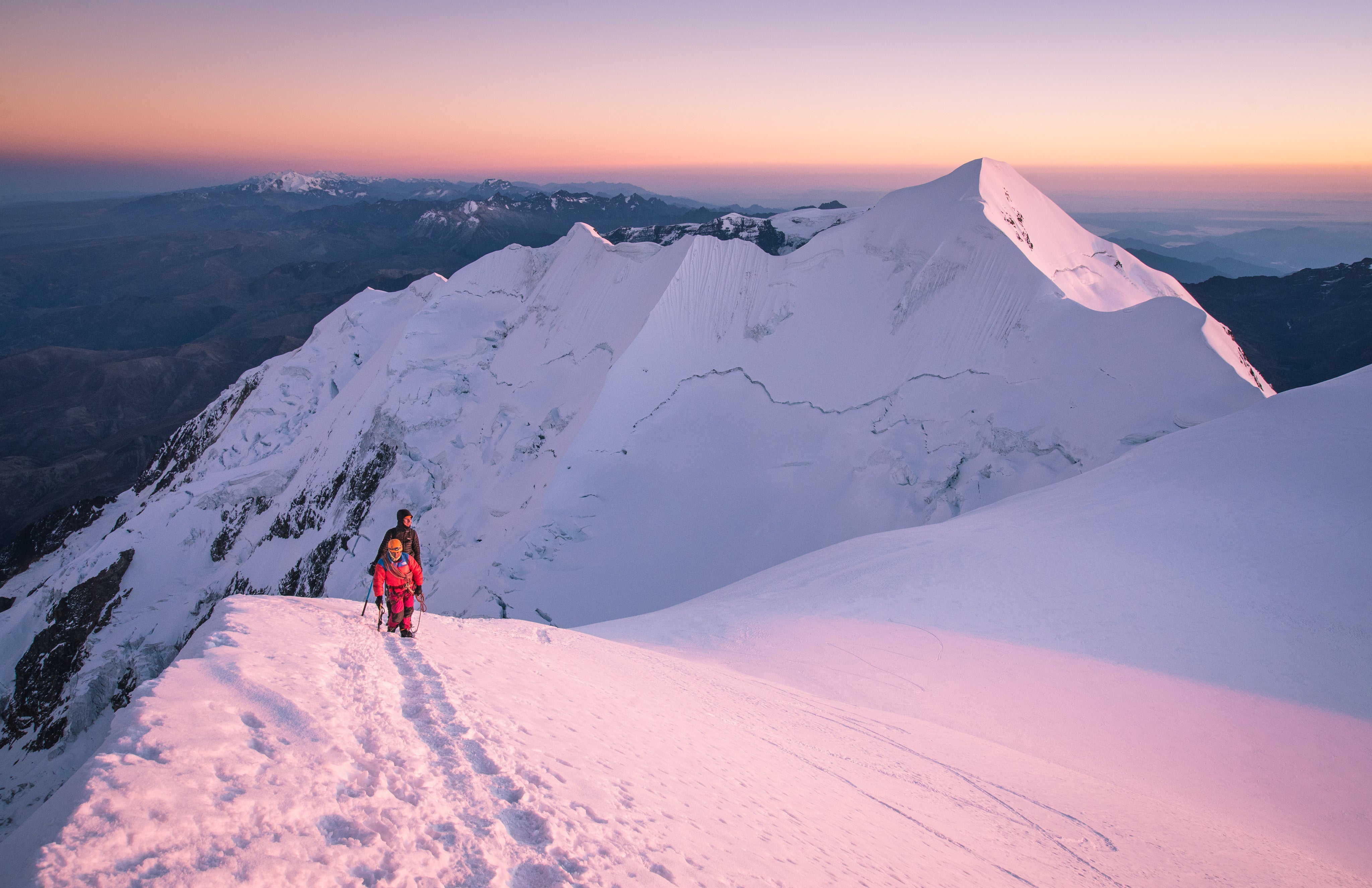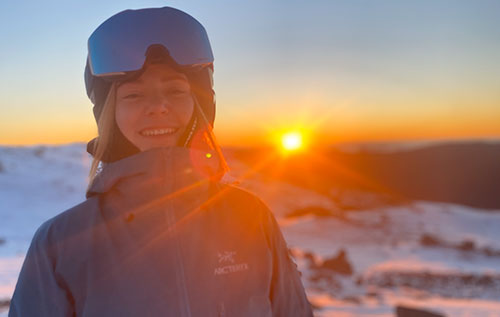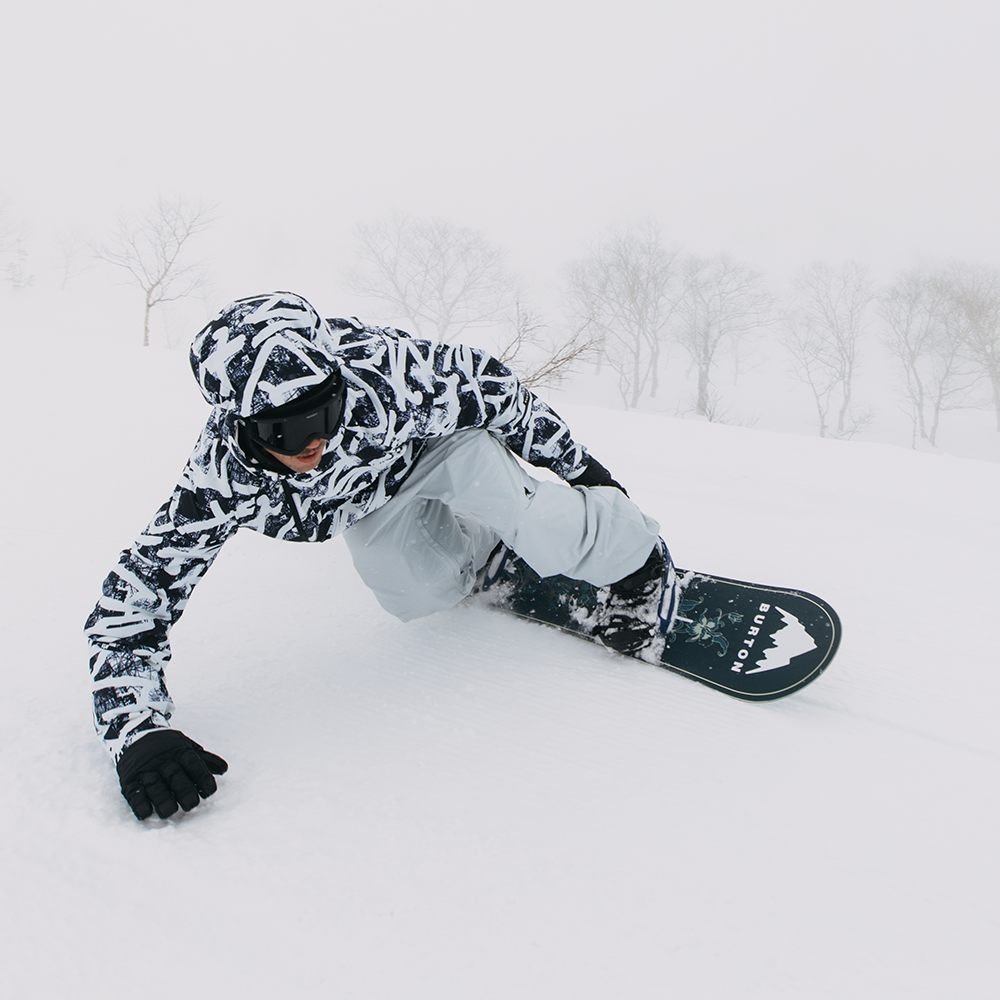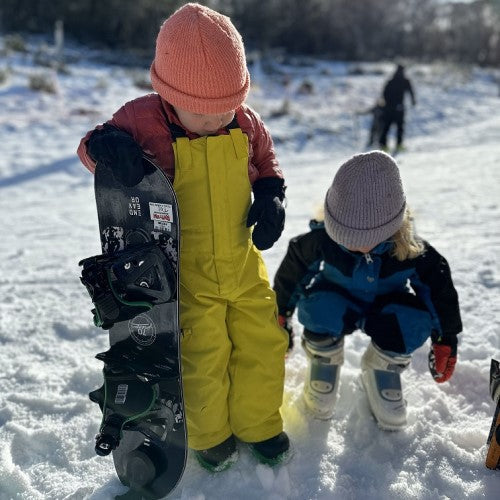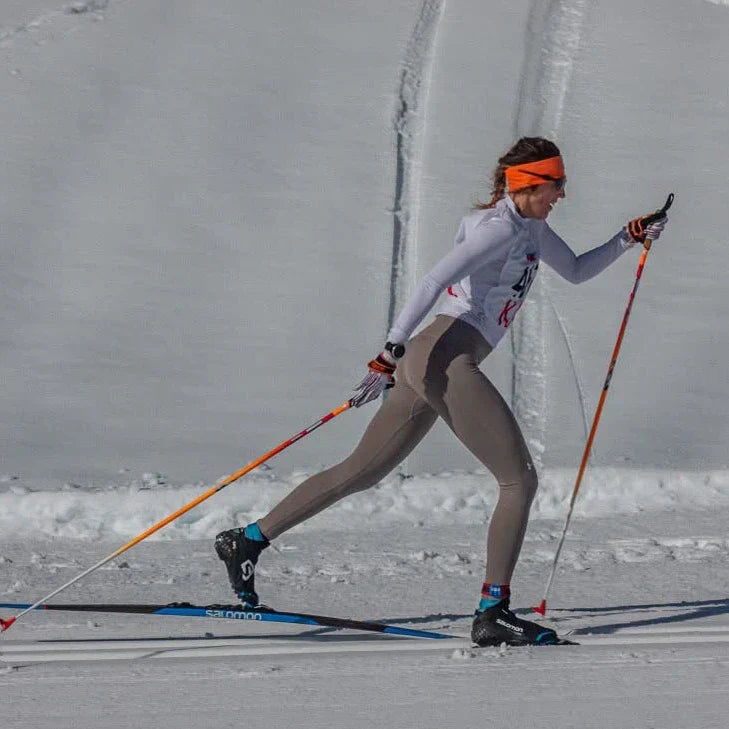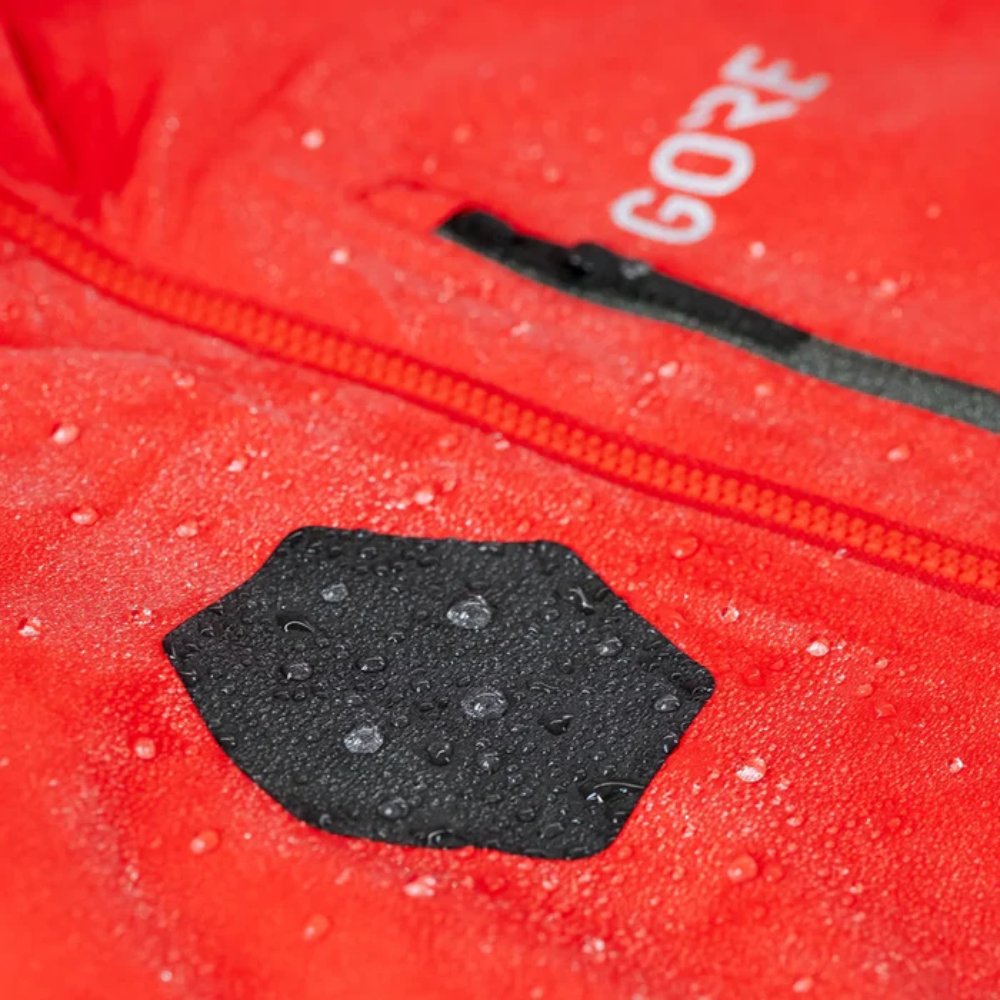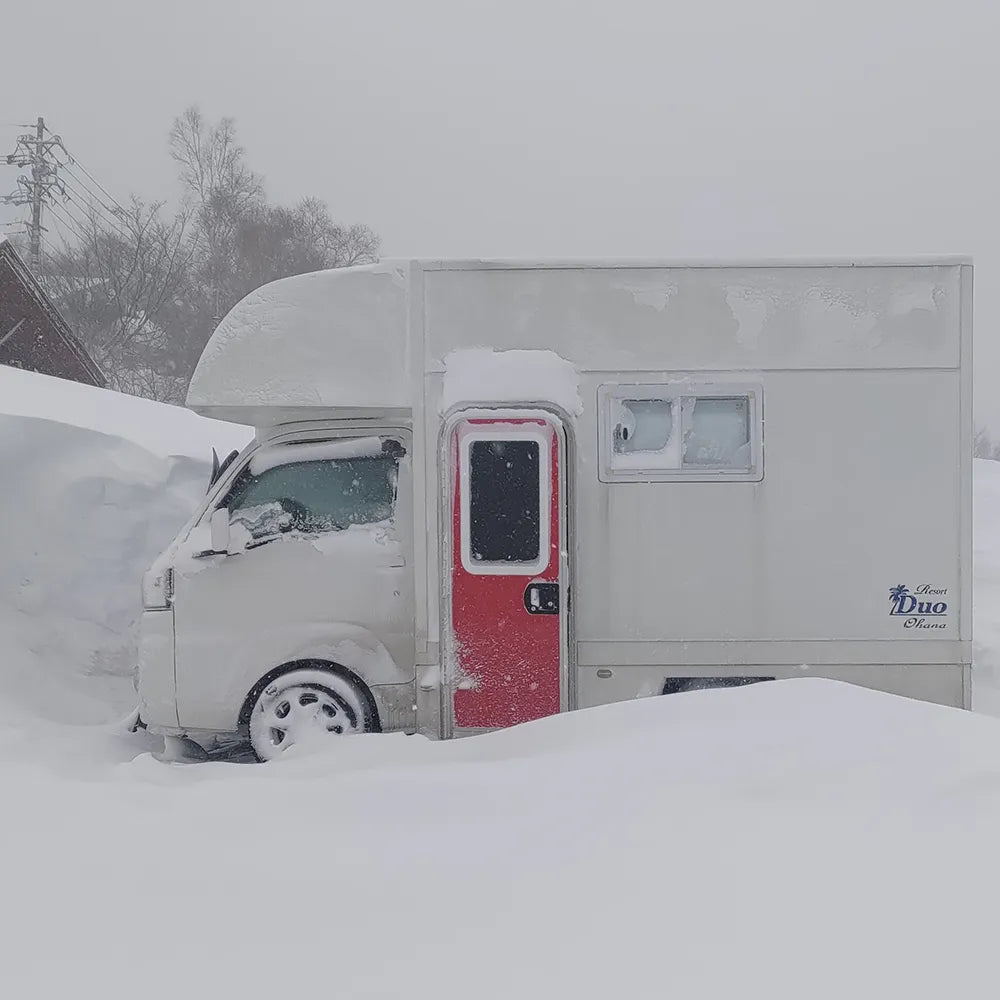 When did you first meet up with the back country?
This was back in 1991, during a ski trip to British Columbia, Canada. I was skiing at Whitetooth resort in Golden (now Kicking Horse) and watched a few guys heading out from the top of the lifts, using what they explained to me was alpine touring equipment. I was intrigued and when we departed Golden I looked up at the huge alpine bowls, convincing myself that back country skiing was for me.
Initially I experimented a bit with equipment, first touring in Securafix alpine adaptor bindings with downhill boots and plastic skins called ‘Snake Skins’. This setup was heavy, cumbersome and slow, so to improve my back country access I learned to telemark. That also had its’ limitations, so I returned to alpine touring with a dedicated touring boot. This set up was comfortable, fairly quick to get around in and powerful and secure enough to ski variable snow conditions. Alpine touring boots were also more secure when adding crampons to climb steep and icy slopes.
That’s over twenty years ago and since then I have toured countless times on the NSW Main Range and experienced pretty much everything it can throw at you. My touring pursuits have also taken me around the world to Europe, Japan, the US (including Alaska), Canada and a few less travelled destinations, such as Russia, Kashmir and India.
Overall, modern AT equipment has the structural integrity comparable to downhill gear & with the addition of a set of climbing skins you have a very functional kit that performs on both sides of the boundary rope & is well suited to travelling overseas.
When did you first meet up with the back country?
This was back in 1991, during a ski trip to British Columbia, Canada. I was skiing at Whitetooth resort in Golden (now Kicking Horse) and watched a few guys heading out from the top of the lifts, using what they explained to me was alpine touring equipment. I was intrigued and when we departed Golden I looked up at the huge alpine bowls, convincing myself that back country skiing was for me.
Initially I experimented a bit with equipment, first touring in Securafix alpine adaptor bindings with downhill boots and plastic skins called ‘Snake Skins’. This setup was heavy, cumbersome and slow, so to improve my back country access I learned to telemark. That also had its’ limitations, so I returned to alpine touring with a dedicated touring boot. This set up was comfortable, fairly quick to get around in and powerful and secure enough to ski variable snow conditions. Alpine touring boots were also more secure when adding crampons to climb steep and icy slopes.
That’s over twenty years ago and since then I have toured countless times on the NSW Main Range and experienced pretty much everything it can throw at you. My touring pursuits have also taken me around the world to Europe, Japan, the US (including Alaska), Canada and a few less travelled destinations, such as Russia, Kashmir and India.
Overall, modern AT equipment has the structural integrity comparable to downhill gear & with the addition of a set of climbing skins you have a very functional kit that performs on both sides of the boundary rope & is well suited to travelling overseas.
 What is your favourite AT destination?
Without a doubt the western faces of the NSW Main Range remain my favourite back country area. This is real ski mountaineering terrain with challenging steeps, knife edge ridges and long descents followed by long climbs. The bonus is that there’re no crevasse hazards & generally a lower instance of avalanches, although they do occur. The more common hazards here are snow surface conditions which can vary from bullet proof ice, wind scour, powder, breakable crust to heavy in a single descent. I enjoy the challenge of these conditions, making subtle adjustments as you feel the variations underfoot.
There is a lot of exposure in this zone, therefore it should be noted that it is the type of terrain that you progress to after developing your skills, knowledge & experience in more forgiving terrain, closer to the trail head. If you are lacking in this area you could always enlist the services of a local guide. There are many areas on the western faces where you are unable to ski climb out because of the steepness. Boot packing in steep & deep snow is very tiring & at times unachievable & climbing a steep icy face when your boots are barely making an indent is terrifyingly frightening & exceptionally dangerous. Crampons & an ice axe along with a self arrest ski pole like the black diamond whippet are essential items when travelling in steep country. A painfully slow 350 vertical metre climb up a 30-45 degree slope may see you getting back to the trail head a couple of hours late....well after dark! Did I bring my head lamp?
What is your favourite AT destination?
Without a doubt the western faces of the NSW Main Range remain my favourite back country area. This is real ski mountaineering terrain with challenging steeps, knife edge ridges and long descents followed by long climbs. The bonus is that there’re no crevasse hazards & generally a lower instance of avalanches, although they do occur. The more common hazards here are snow surface conditions which can vary from bullet proof ice, wind scour, powder, breakable crust to heavy in a single descent. I enjoy the challenge of these conditions, making subtle adjustments as you feel the variations underfoot.
There is a lot of exposure in this zone, therefore it should be noted that it is the type of terrain that you progress to after developing your skills, knowledge & experience in more forgiving terrain, closer to the trail head. If you are lacking in this area you could always enlist the services of a local guide. There are many areas on the western faces where you are unable to ski climb out because of the steepness. Boot packing in steep & deep snow is very tiring & at times unachievable & climbing a steep icy face when your boots are barely making an indent is terrifyingly frightening & exceptionally dangerous. Crampons & an ice axe along with a self arrest ski pole like the black diamond whippet are essential items when travelling in steep country. A painfully slow 350 vertical metre climb up a 30-45 degree slope may see you getting back to the trail head a couple of hours late....well after dark! Did I bring my head lamp?
 What equipment do you carry?
When I head out I pretty much have the same kit in my pack every time, this only varies according to my length of stay i.e. single day or multi day trip. Don’t pack light just because the forecast is ideal, you never know what lies ahead & even minor unforeseen circumstances could force overnighting after an otherwise perfect day? It could therefore be your lack of equipment that becomes your biggest issue, not the initial problem.
There’s much to consider when planning your trip but pay special attention to what equipment your crew has. It’s one of the biggest limiting factors to a successful journey, plan for the lowest common denominator. Does my group have a mix of heavy & lightweight gear? No, we all have tech bindings, light skis & boots. Okay, I reckon we can go with the initial plan. However, if “Alan” turns up on his 190 by 120 fatties, with dukes & downhill boots I reckon we will have to amend our intended route. Did we list a contingency route in our trip intentions?
Never skimp on your gear! Get good stuff & keep it in good repair, retire or repair it when required. If “Joey” hasn’t re-glued or replaced his old climbing skins he’ll be holding us up all day - again!
If I’m headed for the steep country I always take crampons, ice axe & a self arrest ski pole. Ski crampons are an ingenious invention that dramatically increase your safety margin & efficiency when the surface conditions become such that your skins are failing. Most AT bindings have capability for a ski crampon.
My current gear: K2 Wayback skis, Marker King Pin bindings, Garmont Cosmos AT boots, G3 Alpinist climbing skins, crampons, ski crampons, ice axe, self arrest BD Whippet ski pole, down jkt &/or lightweight sleeping bag, lightweight shelter (bivvy or bothy bag), Comms, food, water, emergency ration, map + compass, 1st Aid kit including heat warmers, note pad + pencil, GPS, PLB, headlamp, whistle, sunnies + goggles, probe shovel & beacon.
Bottom line is - in case of emergency I need enough gear to get out of the weather for the night & be safe until help arrives or I self evacuate the next day. On a day trip I’m not planning on staying overnight but I’m planning to be able to survive overnight if necessary.
What equipment do you carry?
When I head out I pretty much have the same kit in my pack every time, this only varies according to my length of stay i.e. single day or multi day trip. Don’t pack light just because the forecast is ideal, you never know what lies ahead & even minor unforeseen circumstances could force overnighting after an otherwise perfect day? It could therefore be your lack of equipment that becomes your biggest issue, not the initial problem.
There’s much to consider when planning your trip but pay special attention to what equipment your crew has. It’s one of the biggest limiting factors to a successful journey, plan for the lowest common denominator. Does my group have a mix of heavy & lightweight gear? No, we all have tech bindings, light skis & boots. Okay, I reckon we can go with the initial plan. However, if “Alan” turns up on his 190 by 120 fatties, with dukes & downhill boots I reckon we will have to amend our intended route. Did we list a contingency route in our trip intentions?
Never skimp on your gear! Get good stuff & keep it in good repair, retire or repair it when required. If “Joey” hasn’t re-glued or replaced his old climbing skins he’ll be holding us up all day - again!
If I’m headed for the steep country I always take crampons, ice axe & a self arrest ski pole. Ski crampons are an ingenious invention that dramatically increase your safety margin & efficiency when the surface conditions become such that your skins are failing. Most AT bindings have capability for a ski crampon.
My current gear: K2 Wayback skis, Marker King Pin bindings, Garmont Cosmos AT boots, G3 Alpinist climbing skins, crampons, ski crampons, ice axe, self arrest BD Whippet ski pole, down jkt &/or lightweight sleeping bag, lightweight shelter (bivvy or bothy bag), Comms, food, water, emergency ration, map + compass, 1st Aid kit including heat warmers, note pad + pencil, GPS, PLB, headlamp, whistle, sunnies + goggles, probe shovel & beacon.
Bottom line is - in case of emergency I need enough gear to get out of the weather for the night & be safe until help arrives or I self evacuate the next day. On a day trip I’m not planning on staying overnight but I’m planning to be able to survive overnight if necessary.
 What are the Do's and Dont's when heading into the wilderness?
- Never depart home without leaving comprehensive details of your trip intentions with a reliable person. This can be done at the NPWS visitor centre in Jindabyne where you can also pick up a PLB for free, with an open credit card slip as security.
- Plan your journey & think it through prior to departure.
- Be realistic about what you can achieve, your fitness & skill level.
- Know your group & undertake journeys that everyone is comfortable with.
- Learn to navigate, always have a map & compass. Know how to take a grid reference from a map & how to plot one on a map.
- Complete a 1st aid course & an avalanche awareness course. Renew & upgrade your training at required intervals. Continually practice these skills; use it or lose it!
- Always check the weather forecast & be aware of changing conditions in the field.
- Keep an eye on each other, learn the signs of hypothermia.
- Don’t be afraid to postpone, turn back or modify your trip, always have a contingency plan.
- Give yourself a buffer, don’t overload your trip intentions.
- Learn to self arrest, that is to stop/arrest yourself when sliding down a steep face.
- If you are heading out on an overnight journey don’t leave home without a waste management plan. Burying it in the snow is not good enough. Chances are that the reason why you have chosen a campsite may also appeal to others & come spring the area will look like a minefield and have a contaminated water supply. The best method is to take it out with you using a poo tube or a designated dry bag. There is a lot of info on this topic on the internet.
If I was a first timer back country rider, what advice would you give me?
Know & understand that in NSW we don’t have a dedicated Search & Rescue (SAR) unit ready to be deployed at short notice. If you raise the alarm you may well be a number of hours away from help, at best, depending on the weather conditions. If conditions are ideal & they aren’t on another job, helicopter rescue units may get to you within a couple of hours, but don’t count on this as poor viz, blizzard conditions or high winds may prevent them from flying. If you activate your PLB a costly chain of events ensues. Be sure your reason for rescue is worthy as hefty fines can be enforced. If vital SAR resources are taken up responding to a distress call from a tired & dysfunctional group you may be denying a party with a very real situation from needy help.
With the functionality & quality of modern alpine touring equipment, the back country is now accessible to a lot more people. Skiing ability are one of many skill sets required to embark on & return home safely from a back country journey. Start out on tours closer to the trail head or on lift serviced terrain & build on your journeys as your skills improve.
Make sure you are familiar with all your equipment & how to use it. Beware of stripping down your kit just because you are close to help, once beyond the resort boundary consider it as out of bounds & you should be self sufficient. When in a group, be honest about your skill level. If you’re uncomfortable with decisions, speak up. Beware of being lead on a journey beyond your capability, always speak up. Always consider your proximity to care beyond your group. Pay attention to your rate of travel & climbing, figure out your average & use this to plan future tours. Always factor in surface conditions, current weather & variations within your group into this equation! Consider the conditions on your approach, will you be walking at lower elevations or skinning. If it’s icy you will be making good ground skating! Is the Snowy River crossing open...this will take up some time & could potentially be the most critical part of your day. If the snow is good out of Guthega maybe I should go that way?
You must have a few memorable experiences, would you care to share?
Having spent so much time in our back country I have encountered numerous situations that have remained memorable for a number of reasons. Many of them relate to the amazing scenery I have regularly witnessed, while others are remembered because of a more particular “tight” situation.
Some of my favourites include skiing knee deep powder snow by the full moon in Twin Valleys, another riding the dragons back on the Sentinel Ridge whilst watching the sunset and always how good my feet feel when the numbness dissipates after barefoot crossing the Snowy River in mid winter. On the other end of the scale I clearly recall being caught out on the Main Range without crampons in 100kph winds, surface too icy to skin & had to emergency bivvy for the night. I also won’t forget being partially entombed in a collapsing snow cave in pounds Ck... steep leeward slopes drift in very quickly during a blizzard.
Above all though, there’s nothing like reflecting and feeling content after an arduous trip into our back country.
Doug, thank you for sharing some great and very valuable advice. We look forward to seeing you out there, right through spring.
For tips on your Snow Sport equipment stay in touch with us:
facebook/rhythmsnowsports
instagram: @rhythmsnowsports
twitter: @rhythmsnowsport
What are the Do's and Dont's when heading into the wilderness?
- Never depart home without leaving comprehensive details of your trip intentions with a reliable person. This can be done at the NPWS visitor centre in Jindabyne where you can also pick up a PLB for free, with an open credit card slip as security.
- Plan your journey & think it through prior to departure.
- Be realistic about what you can achieve, your fitness & skill level.
- Know your group & undertake journeys that everyone is comfortable with.
- Learn to navigate, always have a map & compass. Know how to take a grid reference from a map & how to plot one on a map.
- Complete a 1st aid course & an avalanche awareness course. Renew & upgrade your training at required intervals. Continually practice these skills; use it or lose it!
- Always check the weather forecast & be aware of changing conditions in the field.
- Keep an eye on each other, learn the signs of hypothermia.
- Don’t be afraid to postpone, turn back or modify your trip, always have a contingency plan.
- Give yourself a buffer, don’t overload your trip intentions.
- Learn to self arrest, that is to stop/arrest yourself when sliding down a steep face.
- If you are heading out on an overnight journey don’t leave home without a waste management plan. Burying it in the snow is not good enough. Chances are that the reason why you have chosen a campsite may also appeal to others & come spring the area will look like a minefield and have a contaminated water supply. The best method is to take it out with you using a poo tube or a designated dry bag. There is a lot of info on this topic on the internet.
If I was a first timer back country rider, what advice would you give me?
Know & understand that in NSW we don’t have a dedicated Search & Rescue (SAR) unit ready to be deployed at short notice. If you raise the alarm you may well be a number of hours away from help, at best, depending on the weather conditions. If conditions are ideal & they aren’t on another job, helicopter rescue units may get to you within a couple of hours, but don’t count on this as poor viz, blizzard conditions or high winds may prevent them from flying. If you activate your PLB a costly chain of events ensues. Be sure your reason for rescue is worthy as hefty fines can be enforced. If vital SAR resources are taken up responding to a distress call from a tired & dysfunctional group you may be denying a party with a very real situation from needy help.
With the functionality & quality of modern alpine touring equipment, the back country is now accessible to a lot more people. Skiing ability are one of many skill sets required to embark on & return home safely from a back country journey. Start out on tours closer to the trail head or on lift serviced terrain & build on your journeys as your skills improve.
Make sure you are familiar with all your equipment & how to use it. Beware of stripping down your kit just because you are close to help, once beyond the resort boundary consider it as out of bounds & you should be self sufficient. When in a group, be honest about your skill level. If you’re uncomfortable with decisions, speak up. Beware of being lead on a journey beyond your capability, always speak up. Always consider your proximity to care beyond your group. Pay attention to your rate of travel & climbing, figure out your average & use this to plan future tours. Always factor in surface conditions, current weather & variations within your group into this equation! Consider the conditions on your approach, will you be walking at lower elevations or skinning. If it’s icy you will be making good ground skating! Is the Snowy River crossing open...this will take up some time & could potentially be the most critical part of your day. If the snow is good out of Guthega maybe I should go that way?
You must have a few memorable experiences, would you care to share?
Having spent so much time in our back country I have encountered numerous situations that have remained memorable for a number of reasons. Many of them relate to the amazing scenery I have regularly witnessed, while others are remembered because of a more particular “tight” situation.
Some of my favourites include skiing knee deep powder snow by the full moon in Twin Valleys, another riding the dragons back on the Sentinel Ridge whilst watching the sunset and always how good my feet feel when the numbness dissipates after barefoot crossing the Snowy River in mid winter. On the other end of the scale I clearly recall being caught out on the Main Range without crampons in 100kph winds, surface too icy to skin & had to emergency bivvy for the night. I also won’t forget being partially entombed in a collapsing snow cave in pounds Ck... steep leeward slopes drift in very quickly during a blizzard.
Above all though, there’s nothing like reflecting and feeling content after an arduous trip into our back country.
Doug, thank you for sharing some great and very valuable advice. We look forward to seeing you out there, right through spring.
For tips on your Snow Sport equipment stay in touch with us:
facebook/rhythmsnowsports
instagram: @rhythmsnowsports
twitter: @rhythmsnowsport
Posted by Emily Dorahy on

